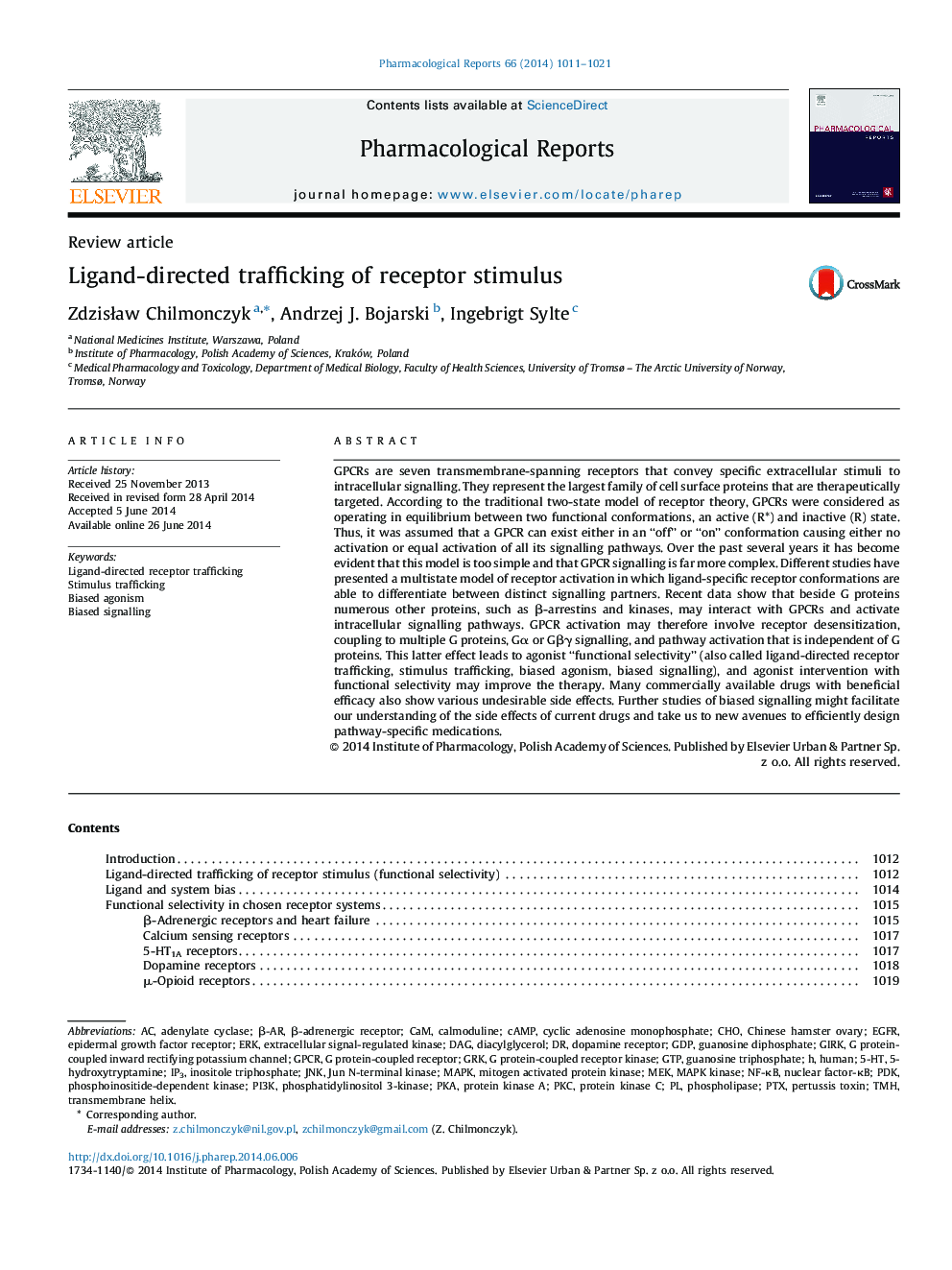| کد مقاله | کد نشریه | سال انتشار | مقاله انگلیسی | نسخه تمام متن |
|---|---|---|---|---|
| 2010470 | 1066978 | 2014 | 11 صفحه PDF | دانلود رایگان |
عنوان انگلیسی مقاله ISI
Ligand-directed trafficking of receptor stimulus
ترجمه فارسی عنوان
قاچاق محرک گیرنده توسط لیگاند
دانلود مقاله + سفارش ترجمه
دانلود مقاله ISI انگلیسی
رایگان برای ایرانیان
کلمات کلیدی
EGFRGRKβ-ARPTXGIRKPKCJun N-terminal kinaseTMHGPCRIP3PDKpKa5-hydroxytryptamineERKGTPNF-κBPI3K5-HTJnkcAMP - cAMPG protein-coupled receptor kinase - G پروتئین گیرنده کینازMAPK - MAPKMAPK kinase - MAPK کینازCyclic adenosine monophosphate - آدنوزین مونوفسفات Cyclicadenylate cyclase - آدنیلات سیکلاسBiased agonism - آگونیسم انگیختهHuman - انسانCho - برایChinese Hamster Ovary - تخمدان هامستر چینیGDP - تولید ناخالص ملیdiacylglycerol - دیسیل گلیسیرینDAG - روزCAM - ساخت به کمک کامپیوترpertussis toxin - سموم سورافنیBiased signalling - سیگنال منصفانهnuclear factor-κB - فاکتور هسته ای κBPhosphatidylinositol 3-kinase - فسفاتیدیلینواستیل 3-کینازPhospholipase - فسفولیپازStimulus trafficking - قاچاق محرکtransmembrane helix - مارپیچ فرابنفشMEK - مجاهدین خلقprotein kinase A - پروتئین کیناز AProtein kinase C - پروتئین کیناز سیmitogen activated protein kinase - پروتئین کیناز فعال Mitogen فعال استextracellular signal-regulated kinase - کیناز تنظیم شده سیگنال خارج سلولیphosphoinositide-dependent kinase - کیناز وابسته به فسفوئینوزیتهGuanosine triphosphate - گوانوزین تری فسفاتguanosine diphosphate - گوانوزین دی فسفاتβ-Adrenergic receptor - گیرنده β-adrenergicDopamine receptor - گیرنده دوپامینEpidermal growth factor receptor - گیرنده فاکتور رشد اپیدرمالG protein-coupled receptor - گیرندههای جفتشونده با پروتئین جی
موضوعات مرتبط
علوم زیستی و بیوفناوری
بیوشیمی، ژنتیک و زیست شناسی مولکولی
زیست شیمی
چکیده انگلیسی
GPCRs are seven transmembrane-spanning receptors that convey specific extracellular stimuli to intracellular signalling. They represent the largest family of cell surface proteins that are therapeutically targeted. According to the traditional two-state model of receptor theory, GPCRs were considered as operating in equilibrium between two functional conformations, an active (R*) and inactive (R) state. Thus, it was assumed that a GPCR can exist either in an “off” or “on” conformation causing either no activation or equal activation of all its signalling pathways. Over the past several years it has become evident that this model is too simple and that GPCR signalling is far more complex. Different studies have presented a multistate model of receptor activation in which ligand-specific receptor conformations are able to differentiate between distinct signalling partners. Recent data show that beside G proteins numerous other proteins, such as β-arrestins and kinases, may interact with GPCRs and activate intracellular signalling pathways. GPCR activation may therefore involve receptor desensitization, coupling to multiple G proteins, Gα or Gβγ signalling, and pathway activation that is independent of G proteins. This latter effect leads to agonist “functional selectivity” (also called ligand-directed receptor trafficking, stimulus trafficking, biased agonism, biased signalling), and agonist intervention with functional selectivity may improve the therapy. Many commercially available drugs with beneficial efficacy also show various undesirable side effects. Further studies of biased signalling might facilitate our understanding of the side effects of current drugs and take us to new avenues to efficiently design pathway-specific medications.
ناشر
Database: Elsevier - ScienceDirect (ساینس دایرکت)
Journal: Pharmacological Reports - Volume 66, Issue 6, December 2014, Pages 1011-1021
Journal: Pharmacological Reports - Volume 66, Issue 6, December 2014, Pages 1011-1021
نویسندگان
ZdzisÅaw Chilmonczyk, Andrzej J. Bojarski, Ingebrigt Sylte,
